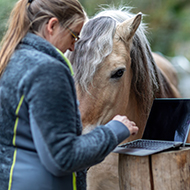H5N1 virus mutating in humans, study finds
The human strain of H5N1 caused a more severe disease than the bovine strain.
A study into the spread of H5N1 in the United States of America has revealed that the virus has developed new mutations in human hosts.
Researchers from Texas Biomedical Research Institute (Texas Biomed) identified nine additional mutations in the human strain of H5N1 compared to the strain present in bovines.
H5N1, commonly known as bird flu, is naturally found in wild birds and is lethal in chickens. It has since spread through a variety of mammals, first being identified in dairy cows in spring 2024.
The first reported death caused by H5N1 was reported in January 2025, as a result of exposure to infected chickens.
Researchers are increasingly concerned about the evolution of the virus, particularly of its potential to transmit from human to human. Texas Biomed has been studying H5N1 since the outbreak began last year, using specialised tools and animal models.
When comparing the human strain of H5N1 to the strain in bovines, researchers identified nine additional mutations which were believed to have occurred after human infection.
The study found that the human strain of H5N1 caused a more severe disease than the bovine strain. The human strain also replicated more efficiently and was found in much higher quantities in brain tissue.
However, the researchers did also identify that the mutations were not affecting the efficacy of approved antibiotics.
The researchers say that this is an important finding, as antibiotics will be vital if a pandemic does occur. Humans have no pre-existing immunity against H5N1, and seasonal flu vaccines offer limited protection.
Future research will see the team explore the human strain individually, investigating why infections from cows appear to be less harmful than from chickens. They will also examine why H5N1 causes mild disease in cows, but is lethal in cats.
Ahmed Mostafa Elsayed, staff scientist at Texas Biomed, said: "A key priority will be to eradicate bird flu from dairy cows to minimize risk of mutations and transmission to people and other species,
"Steps that can be taken now include thorough decontamination of milking equipment and more stringent quarantine requirements, which will help eliminate the virus more quickly in cows."
The full study can be found in the journal Emerging Microbes and Infections.
Image © Shutterstock



 With Strangles Awareness Week just around the corner (5-11 May), vets are being encouraged to share a survey about the disease with their horse-owning clients.
With Strangles Awareness Week just around the corner (5-11 May), vets are being encouraged to share a survey about the disease with their horse-owning clients.